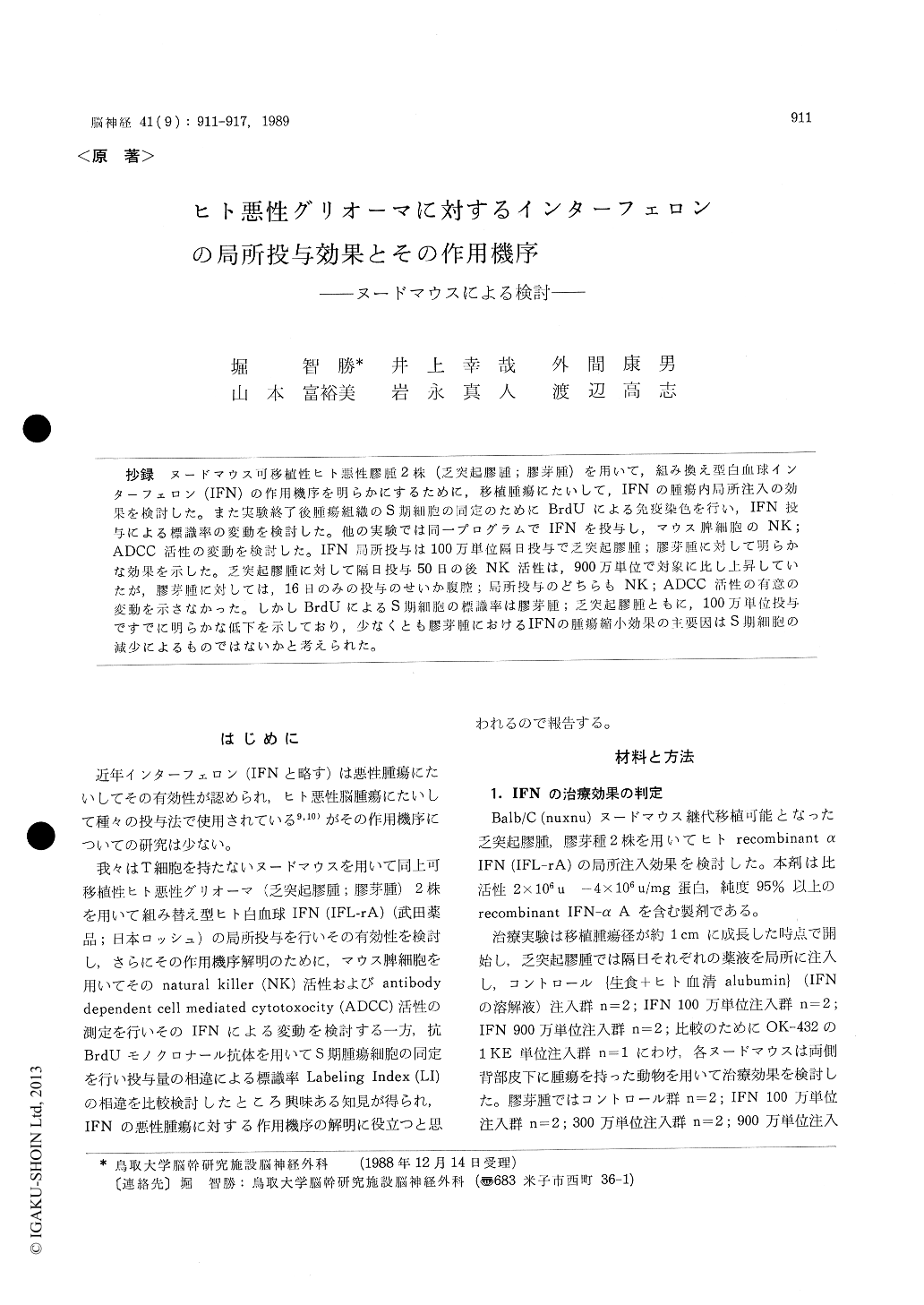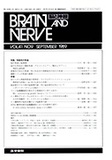Japanese
English
- 有料閲覧
- Abstract 文献概要
- 1ページ目 Look Inside
抄録 ヌードマウス可移植性ヒト悪性膠腫2株(乏突起膠種;膠芽腫)を用いて,組み換え型白血球インターフェロン(IFN)の作用機序を明らかにするために,移植腫瘍にたいして, IFNの腫瘍内局所注入の効果を検討した。また実験終了後腫瘍組織のS期細胞の同定のためにBrdUによる免疫染色を行い, IFN投与による標識率の変動を検討した。他の実験では同一プログラムでIFNを投与し,マウス脾細胞のNK;ADCC活性の変動を検討した。 IFN局所投与は100万単位隔日投与で乏突起膠腫;膠芽腫に対して明らかな効果を示した。乏突起膠腫に対して隔日投与50日の後NK活性は,900万単位で対象に比し上昇していたが,膠芽腫に対しては,16日のみの投与のせいか腹腔;局所投与のどちらもNK;ADCC活性の有意の変動を示さなかった。しかしBrdUによるS期細胞の標識率は膠芽腫;乏突起膠腫ともに,100万単位投与ですでに明らかな低下を示しており,少なくとも膠芽腫におけるIFNの腫瘍縮小効果の主要因はS期細胞の減少によるものではないかと考えられた。
In order to clarify the mechanism of action of recombinant human leucocyte interferon, the effect of local injection of it to the human malignant gliomas (one oligodendroglioma, the other glio-blastoma) transplanted into nude mice were evalu-ated. The volume of the tumors were calculated as 1/2 (short diameter [cm])2×(long diameter[cm]).
And the ratio of tumor volume(T)/original size (C) were calculated in terms of experimental day. Among the groups of control (vehicle of IFN injected), 1 million units of IFN locally injected group, 3 million units injected group, and 9 million units injected group, the effects of the treatment were statistically evaluated in terms of T/C.
At the end of the experiment, each animal was injected 4 mg of BrdU intraperitoneally, and the labeling indices of the tumor tissue were measured and compared among the groups above mentioned. Local injection of IFN to the tumor was effective even at the dose of 1 million units every other day for 16 days for glioblastoma and 50 days for oligodendroglioma. The labeling index of the treated groups was significantly reduced when compared to that of control group in both tumors. And the experiment was performed to evaluate the variation of NK activity and ADCC activity of mouse spleen cells among the experimental groups. For the oligodendroglioma, NK activities were significantly increased in the 9 milliion units of IFN injected group when compared to those of control group.
For glioblastoma, there was no definite variation of NK and ADCC activities among the groups. These results suggested that, the mechanism of effectiveness of IFN against glioblastoma is mainly due to the arrest of change of G 1 phase to S phase. For the oligodendroglioma, the mechanism of effect of IFN is supposed to be due not only to this arrest, but also partly due to the augmen-tation of NK activity of spleen cells. The dif-ference of these results between the glioblastoma and the oligodendroglioma was probably due to the differences of the length and total amount of IFN used.
The results of this study is valuable in con-sidering the treatment of IFN against human malignant gliomas.

Copyright © 1989, Igaku-Shoin Ltd. All rights reserved.


